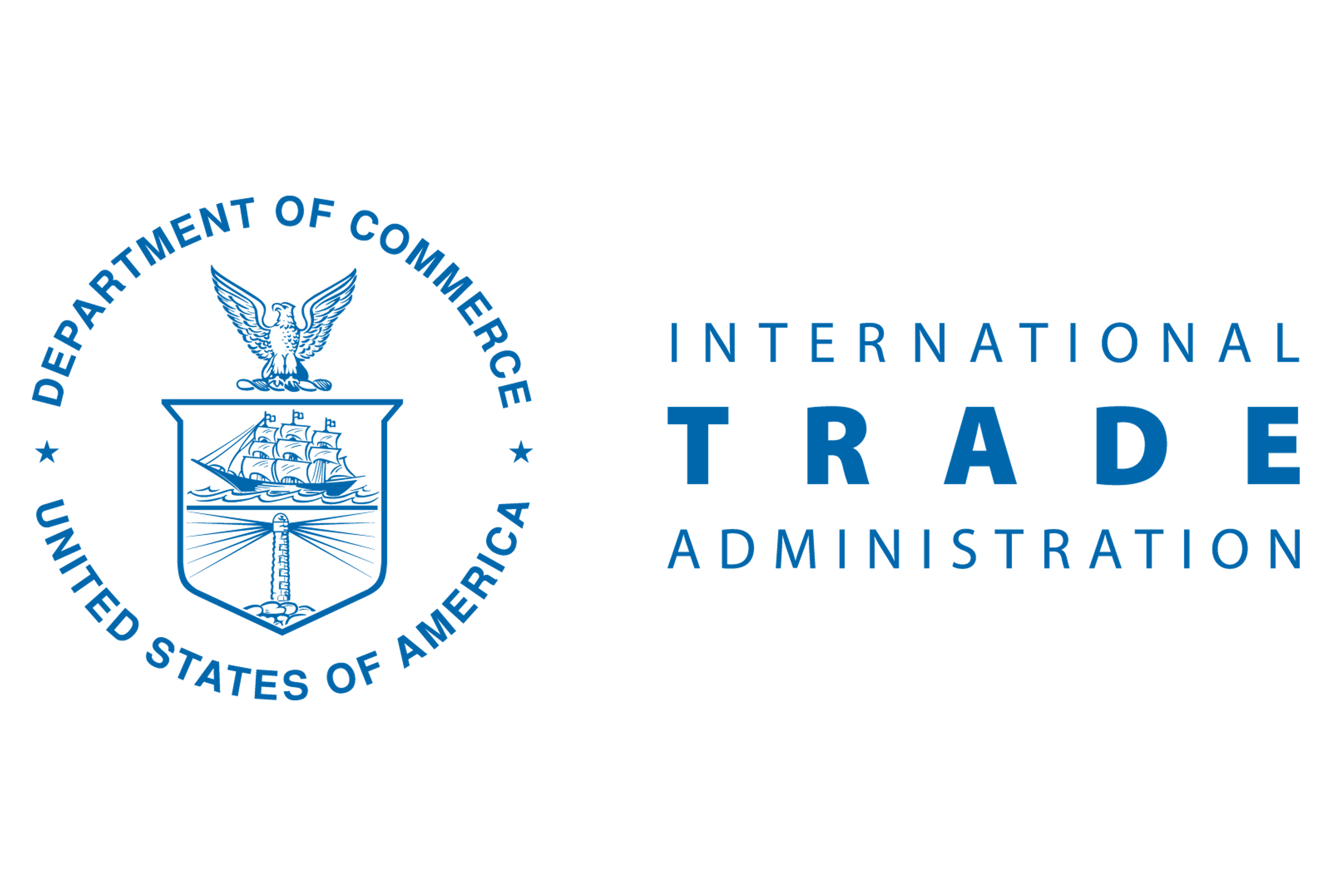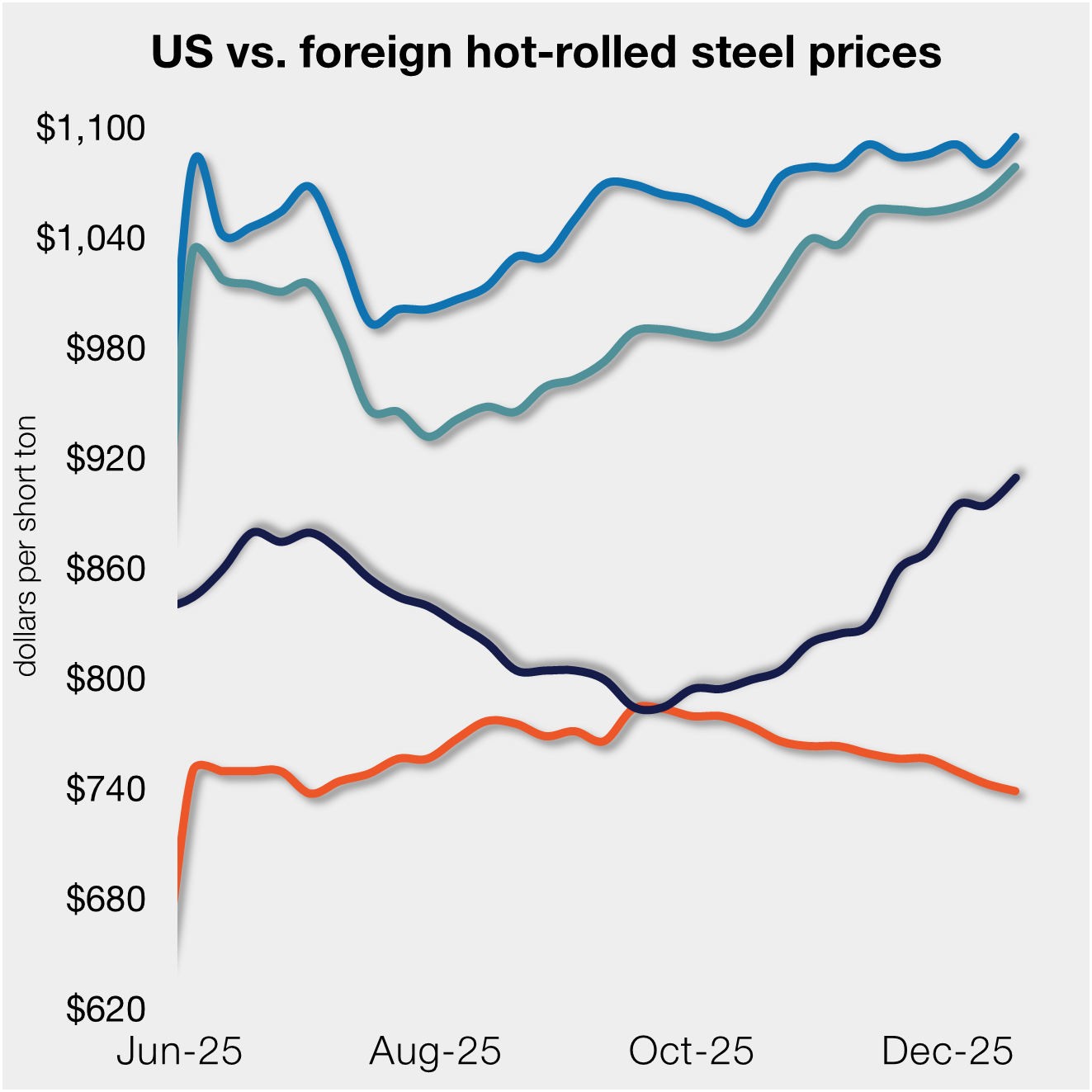Overseas
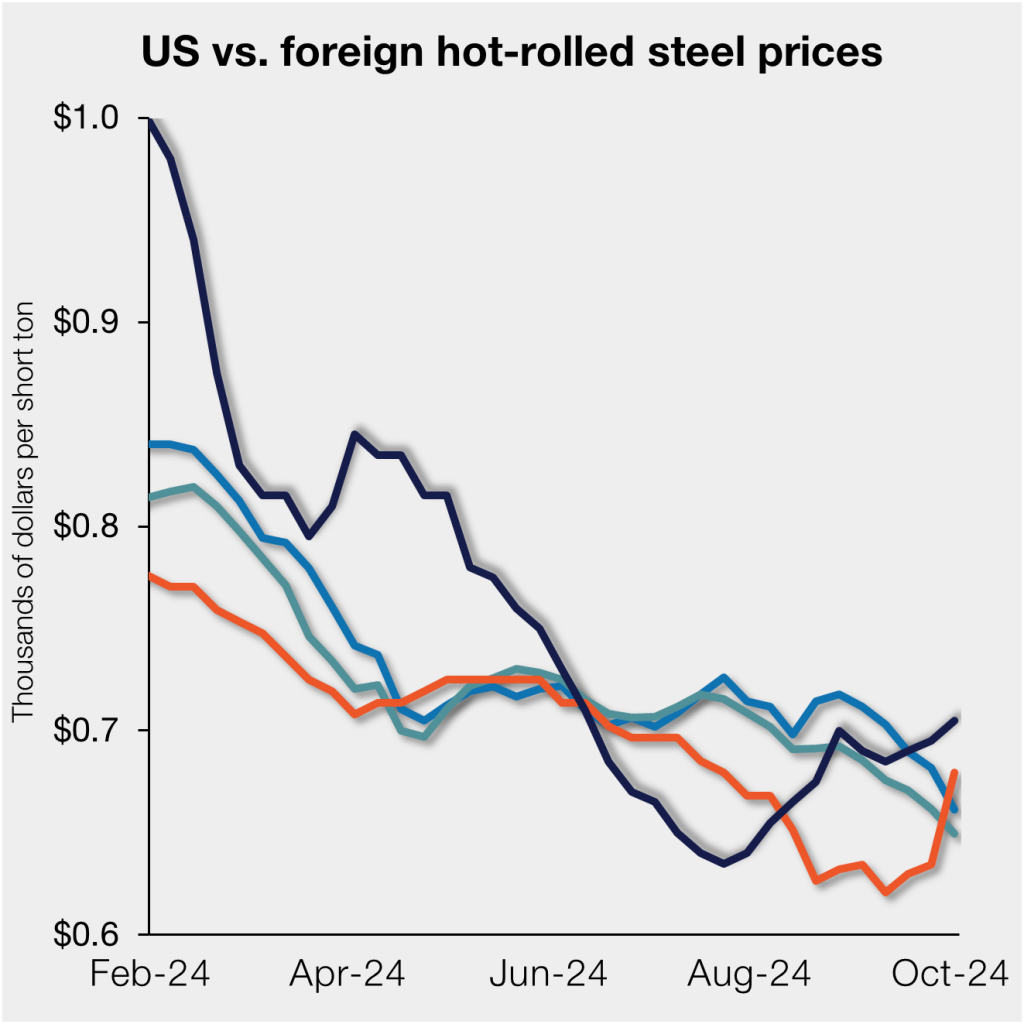
October 3, 2024
US, offshore HR prices diverge a bit more
Written by David Schollaert
US hot-rolled (HR) coil prices moved slightly higher again this past week but remain marginally higher than offshore material on a landed basis.
Since reaching parity with import prices in late August, domestic prices have been slowly pulling ahead of imports. This has been driven by a slight deviation in price movements – slow but steady stateside gains vs. mixed changes overseas.
SMU’s check of the market on Tuesday, Oct. 2, put average domestic HR tags at $705 per short ton (st), up $10/st from last week. US hot band has rebounded from July’s 20-month low, but the rise has been slow, with average prices increasing $70/st over the past 10 weeks.
Domestic HR is now theoretically 5.8% more expensive than imported material. That’s a touch higher than last week’s reading of 5.1%. While the gains have been negligible at times, prices have seen a notable shift since late July, when stateside products were almost 12% cheaper than imported HR.
In dollar-per-ton terms, US HR is now, on average, $41/st more expensive than offshore product (see Figure 1), compared to $36/st more costly last week. Prices have swung $113/st from late July when US tags were ~$72/st cheaper than offshore material.
The charts below compare HR prices in the US, Germany, Italy, and Asia. The left-hand side highlights prices over the last two years. The right-hand side zooms in to show more recent trends.
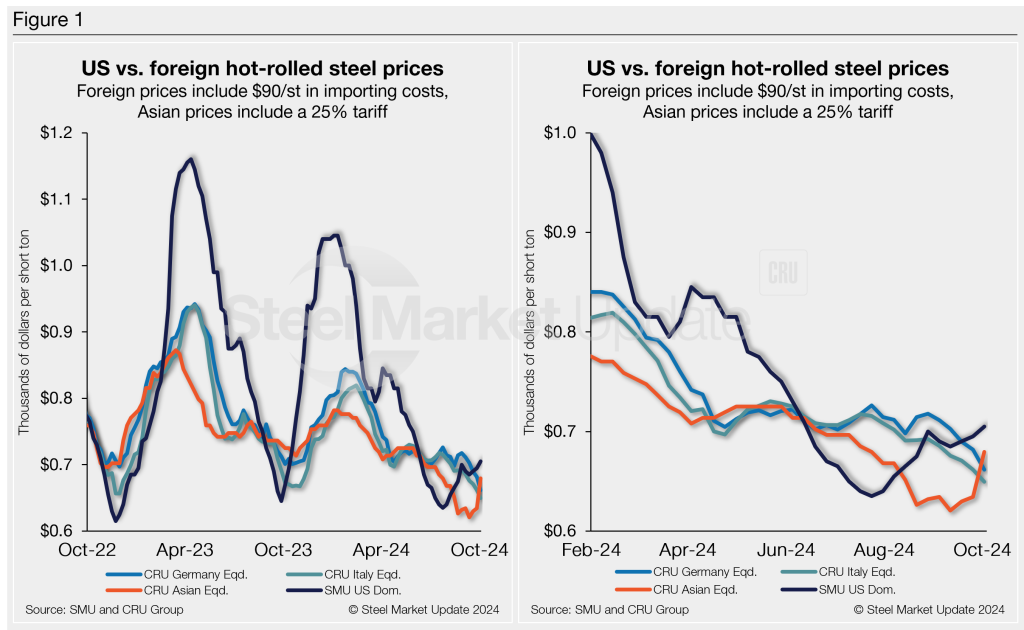
Methodology
This is how SMU calculates the theoretical spread between domestic HR coil prices (FOB domestic mills) and foreign HR coil prices (delivered to US ports): We compare SMU’s weekly US HR assessment to the CRU HR weekly indices for Germany, Italy, and East and Southeast Asian ports. This is only a theoretical calculation. Import costs can vary greatly, and that can influence the true market spread.
We add $90/st to all foreign prices as a rough means of accounting for freight costs, handling, and trader margin. This gives us an approximate CIF US ports price to compare to the SMU domestic HR coil price. Buyers should use our $90/st figure as a benchmark and adjust up or down based on their own shipping and handling costs. If you import steel and want to share your thoughts on these costs, please get in touch with the author at david@steelmarketupdate.com.
Asian HRC (East and Southeast Asian ports)
As of Thursday, Oct. 3, the CRU Asian HRC price was $472/st, a $37/st jump vs. the week prior. Adding a 25% tariff and $90/st in estimated import costs, the delivered price of Asian HRC to the US is approximately $680/st. As noted above, the latest SMU US HR price is $705/st on average.
The result: US-produced HR is now theoretically $25/st more expensive than steel imported from Asia. That’s a $36/st decline from last week because prices in Asia increased at a sharper pace than domestic tags. Still, it’s a far cry from late December, when US HR was $281/st more expensive than Asian products.
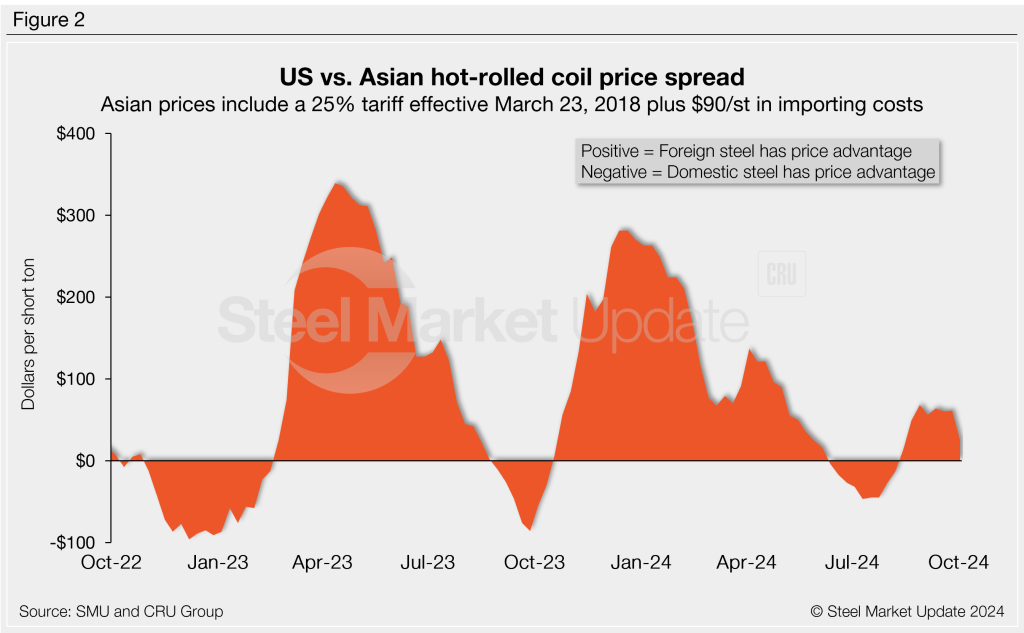
Italian HRC
Italian HR prices declined $12/st to $560/st this week. After adding import costs, the delivered price of Italian HR is, in theory, $650/st.
That means domestic HR coil is theoretically $55/st more expensive than imports from Italy. That’s up $22/st from last week. Recall that US HR was $297/st more costly than Italian hot band just five months ago.
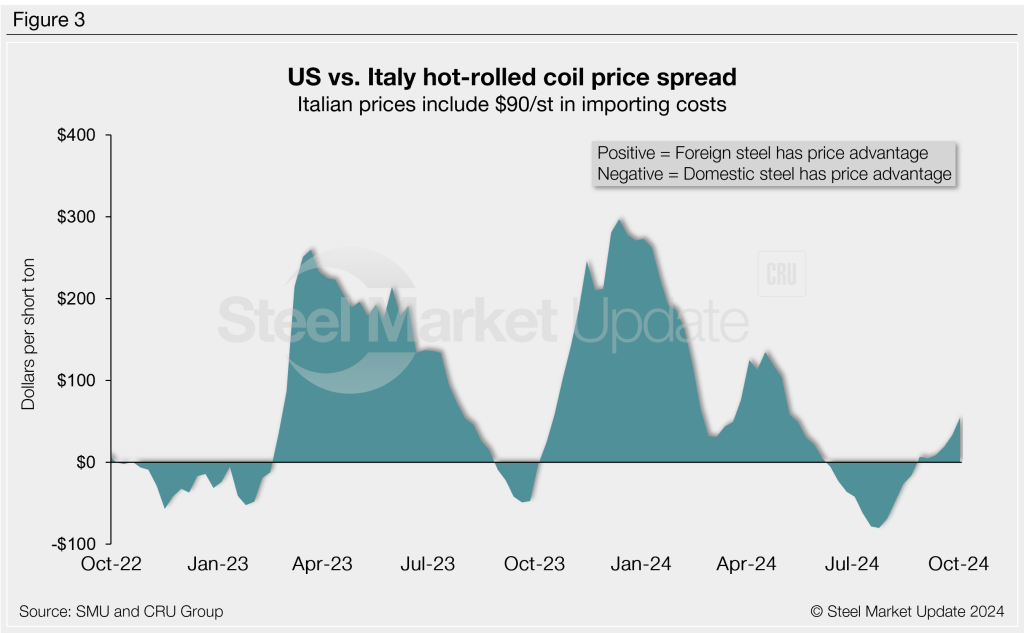
German HRC
CRU’s German HR price moved down $20/st to $572/st. After adding import costs, the delivered price of German HR coil is, in theory, $662/st.
The result: Domestic HR is theoretically $43/st more expensive than product imported from Germany. Stateside hot band was at an $18/st discount just three weeks ago. At points in 2023, in contrast, US HR was as much as $265/st more expensive than imported German hot band.
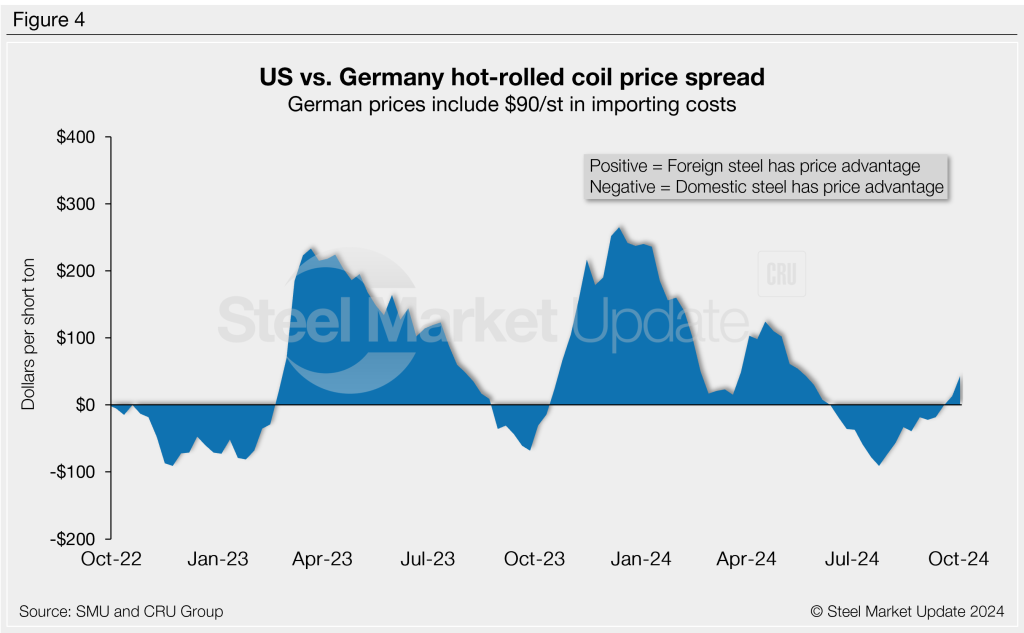
Notes: Freight is important when deciding whether to import foreign steel or buy from a domestic mill. Domestic prices are referenced as FOB the producing mill. Foreign prices are CIF, the port (Houston, NOLA, Savannah, Los Angeles, Camden, etc.). Inland freight, from either a domestic mill or from the port, can dramatically impact the competitiveness of both domestic and foreign steel. It’s also important to factor in lead times. In most markets, domestic steel will deliver more quickly than foreign steel. Effective Jan. 1, 2022, Section 232 tariffs no longer apply to most imports from the European Union. It has been replaced by a tariff rate quota (TRQ). Therefore, the German and Italian price comparisons in this analysis no longer include a 25% tariff. SMU still includes the 25% Section 232 tariff on prices from other countries. We do not include any antidumping (AD) or countervailing duties (CVD) in this analysis.





